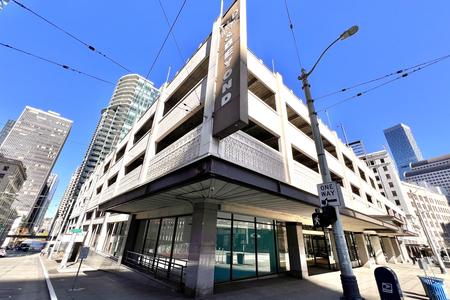Washington went dry before the rest of the nation. Booze was restricted by 1916. During World War I, the government would not allow alcohol sales within 10 miles of a military installation, and Seattle had a number of those, like Fort Lawton.
In 1919, national prohibition went into effect and lasted until 1933. Saloons shut down, breweries closed or, like distilleries during the recent pandemic that turned to making hand sanitizer, they began making nonalcoholic products like grape juice or soda pop.
But Seattle’s thirst would not remain unquenched. The large population of men, gambling joints and a sex trade was fueled by loggers, fishermen, miners, sailors, sawmill workers and others. Bribes to members of a long-corrupt police department helped lubricate a system that allowed illegal booze to flow. Some cops were even part of organized bootlegging gangs.
The underground economy wasn’t just for the rich who drank in their private clubs. It flourished in places like Pioneer Square, Japantown, Chinatown and Jackson Street, long-standing places where many Seattleites went to sin. And it fed entrepreneurs who took not to risky smuggling, but to making moonshine on a grand scale for different markets with their own hidden stills and breweries.
It should also be said that some scholars believe that Prohibition was largely a movement of the white, Protestant middle class to control the working class, immigrants and people of color — especially in growing urban areas.
One flourishing moonshine sector catered to the Japanese community, where illicit sake was sold to quench the thirst of towns with large Japanese populations, including Seattle, Tacoma, Vancouver, British Columbia, and Spokane.
In his landmark book on the first generation of Japanese in the Northwest — Issei — author Kazuo Ito talked about Japantown’s gambling clubs, like the Toyo. “Wherever there were Issei, there were sake, women and gambling,” he wrote. Clubs like the Toyo paid a price to the police to stay open — about $1,000 a month! That’s a lot in 1920s dollars.
For that generation, sake was not only a traditional drink for Shinto rituals or special occasions, but it was the beverage of choice for social recreation, especially among the abundance of “cannery boys and sawmill workers” who were encouraged to drink and gamble on payday, Ito writes. The greatest number of Japanese in Seattle at that time were employed as laborers.
Sake is called wine but is actually brewed from specially milled white rice and transformed with a fungus called koji, which is also used in making staples like miso and soy sauce. By Prohibition, California had a thriving commercial rice-growing industry in the Sacramento Valley. In other words, sake ingredients were readily available.
In addition, a hard liquor called shochu could also be distilled from sake ingredients to which other things, like sweet potatoes or barley, could be added. Such a drink was sometimes referred to as “Japanese whiskey.”
The process of sake brewing can be elaborate, with many steps. Illegal sake was often made in outlying rural areas, away from the prying eyes of the city’s “dry squad” — officers who raided with axes and smashed and confiscated what they found. Federal agents and local sheriffs stepped in to stop sake at these sources and make arrests.
Some operations were large. In 1918, the feds busted a “rice whiskey” operation between the Washelli cemetery and Edmonds that was “the largest ever discovered” in the area. Confiscated were an elaborate still, 3,000 pounds of rice and laundry and garbage containers designed to conceal the booze in a delivery truck.
Another operation, in Milton in Pierce County, was also said to be big. It was hidden in the woods and manned by four Japanese men. Fifteen large vats with a capacity of 4,500 gallons of sake were taken, along with tons of rice and corn.
A raid by “Seattle dry squadders” In 1919 at a Ravenna truck garden resulted in the arrests of four Japanese men with a 500-gallon mash tub and bottles labeled “grape juice.” The moonshiners were taken to the city jail.
Four hundred gallons of sake was seized or destroyed in a bust south of Georgetown on McKinley Hill. The local sheriff was amazed at the scale, saying “I have wondered a long time where so much sake came from.”
The breweries and stills had to be hidden, but so too their points of distribution. In Seattle’s International District a bust at Fifth and Maynard avenues resulted in the seizure of 2,000 gallons of sake and “rice whiskey,” but one man escaped through a secret underground passage.
A café at Fifth Avenue and Main Street was found to have a hidden sake stash under its garbage cans. And how about this? A rooming house on King Street had attached its sink’s faucet to two 20-gallon copper vats of moonshine and sake. Hot and cold running booze! It was detected because the landlady had left the faucet on when police raided.
Seattle celebrated when Prohibition ended. But some people had to reacquaint themselves with beverages. Ito quotes a Japanese café owner saying the demand for beer after repeal of Prohibition was intense at the Jackson Café in the International District’s Bush Hotel. Desperate customers drank it even though it was warm, too foamy and flat to taste. “To look back on it,” he said, “both seller and customer … had forgotten the taste of beer.” They certainly weren’t picky, as happy days were there again.
Despite Prohibition, though, people hadn’t lost their taste for their traditional rice-based beverage. Sake endured as a cultural touchstone. It was even brewed in secret in the barracks of camps where West Coast Japanese Americans were forcibly incarcerated during World War II. It helped to keep spirit and culture alive despite hard times and oppression.




